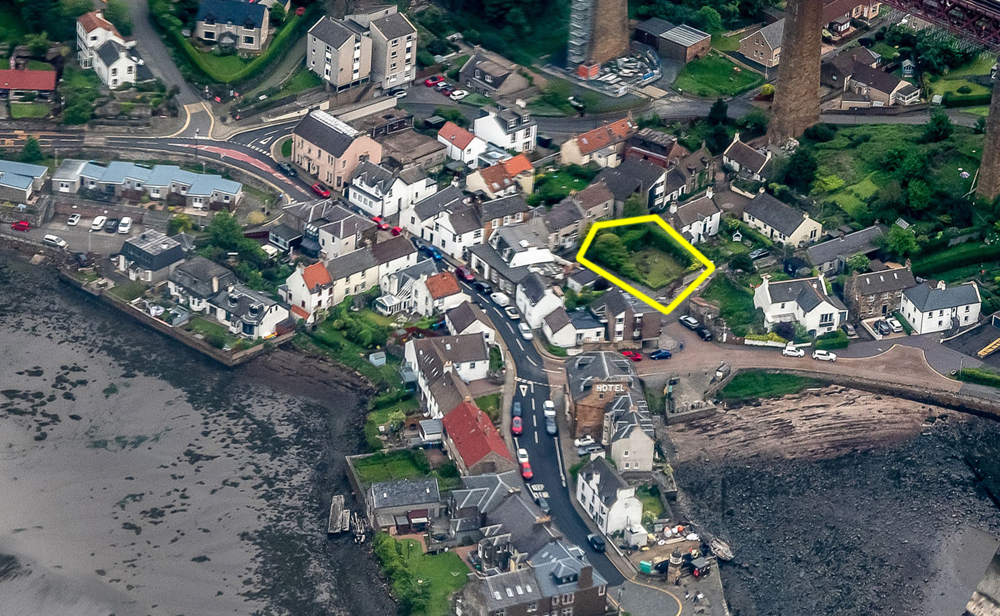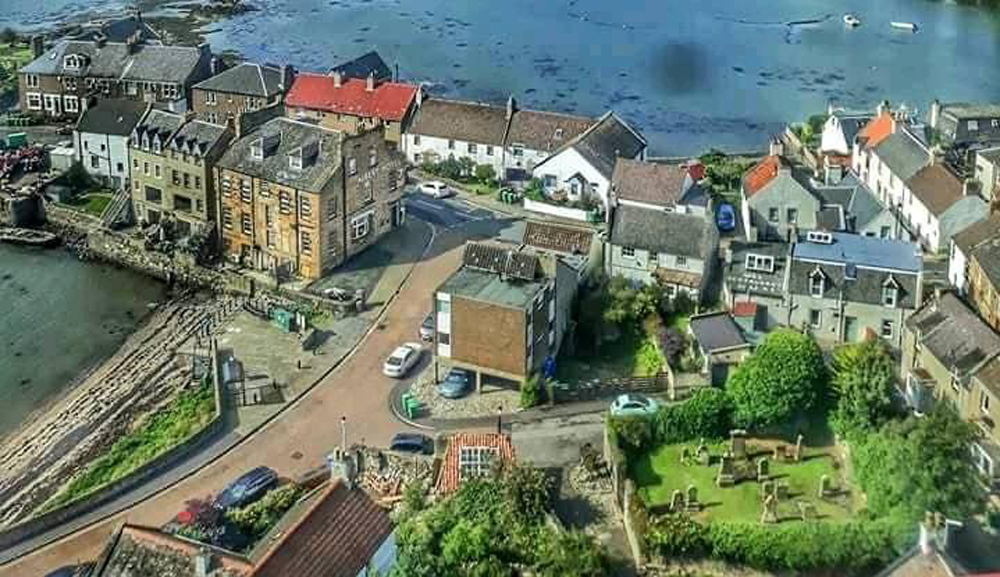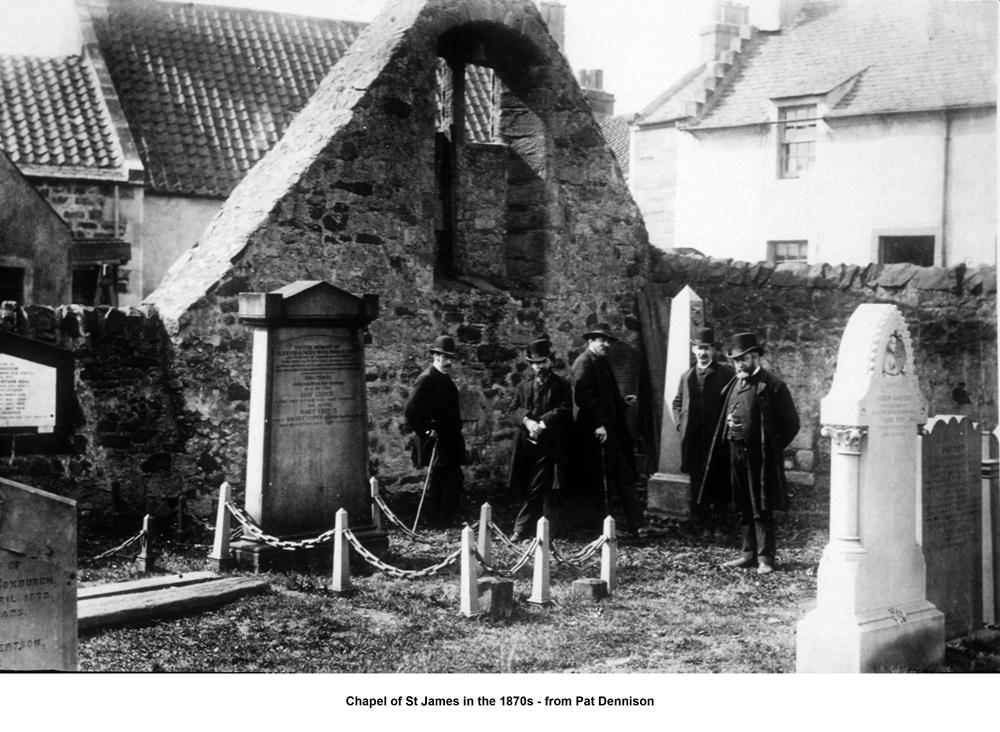St James’ Chapel
| < Intro | Δ Index | The Sailor’s Society > |
The story of one of North Queensferry’s most historic landmarks, by E Patricia Dennison
The remnants of St James’ Chapel are the only surviving medieval remains in this historic village.
 St James Chapel location (highlighted) in the centre of the old village
St James Chapel location (highlighted) in the centre of the old village
What we can see today gives little impression of what medieval visitors would have experienced as they crossed the sometimes treacherous Forth and landed in South Bay, as there are now houses erected between the chapel and the foreshore. The chapel would have been the first important building seen from this landing point; and is possible that the waters extended nearer to the chapel than they do at present.
 St James Chapel as seen from a train on the Forth Bridge
St James Chapel as seen from a train on the Forth Bridge
Queen Margaret (c 1046 -93) encouraged pilgrims to visit the shrine of St Andrew in the settlement of the same name by giving free passage across the Forth. Their first port of call would have been the chapel for prayer along their route. After she herself was canonised in 1250, pilgrims took the same route to visit her shrine at Dunfermline Abbey.
The chapel, dedicated appropriately to the patron saint of pilgrims, was granted by Robert I (1306-29) to Dunfermline Abbey sometime between 1320 and 1322. But it had probably been standing for many years previously, as along with specific instructions that the chapel be provided with two chaplains, the charter specified also that the building should be repaired and it referred to possessions of the chapel belonging to it by ‘right and antiquity’. There was a manse attached to the chapel which had a garden and stood to the north of the chapel. If you look closely you can still see the remnants of the doorway by which the chaplain (there was only one by 1479) left the chapel to go to his manse. The chapel also had two acres of land, which it is thought were to the west of the village, and pasturage for a horse.
Medieval royalty often crossed on the Queensferry Passage and it is known that James IV (1488-1513) visited the chapel and made offerings of fourteen shillings in both 1504 and 1507. On Christmas night 1547, Sir John Luttrell, who was garrisoning the island of Inchcolm for the English, landed at North Queensferry and ‘burned the town’; it is very probable that the chapel was damaged. After the Reformation, in 1572 the crown bestowed the chaplainry on Henry Boswell, son of a prominent Dunfermline burgess, to support him in ‘the study of grammar’ at Dunfermline’s grammar school. Ten years later, while still a student, he became named ‘vicar’ rather than chaplain and in 1584 he disposed of the two acres of land, now under the road to Inverkeithing and modern houses.
Little is heard of the chapel after this and it may well have ceased to function. For its part in the opposition to the Cromwellian forces after the battle of Inverkeithing in 1651, North Queensferry was sacked and the chapel was reputedly left in ruins. Some time after this, precisely when is uncertain, the interior of the chapel became a cemetery.

In 1752, the sailors of the Ferry erected a wall round the cemetery, as may be seen on the stone plaque beside the entrance gate.
Exactly why is unclear. It may have been to protect the bodies from grave robbers who dug up the newly buried for medical research; or a small wall may have been required to hold back the land of the cemetery as the land rose with repeated burials.
The graves may still be seen in their peaceful setting; the west gable remains standing and part of the north wall, with the blocked-off entrance is still intact. This is all that is left of the ancient chapel of St James.


| < Intro | Δ Index | The Sailor’s Society > |